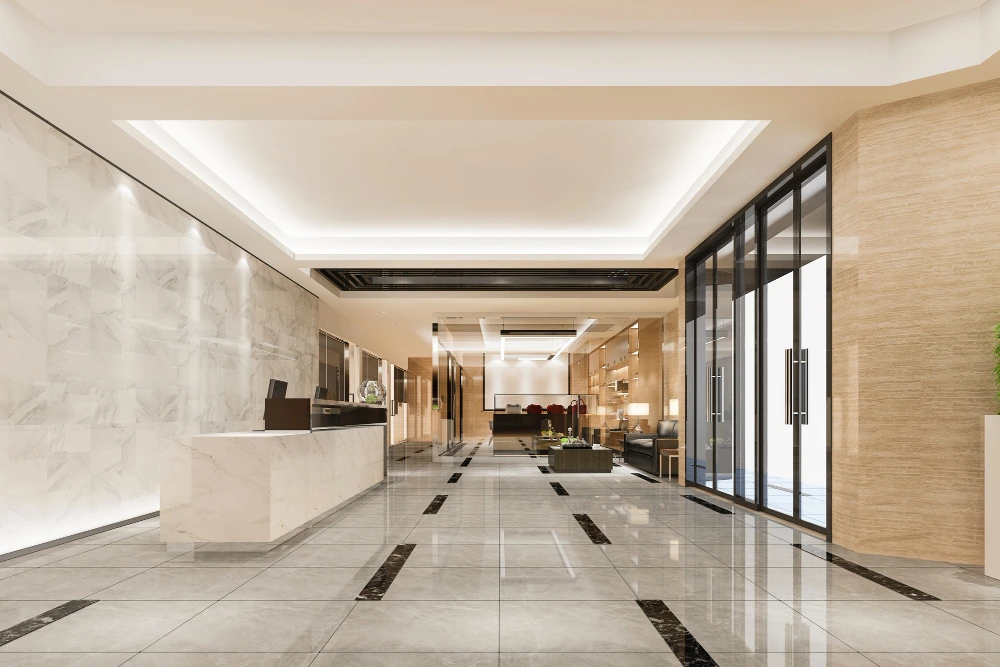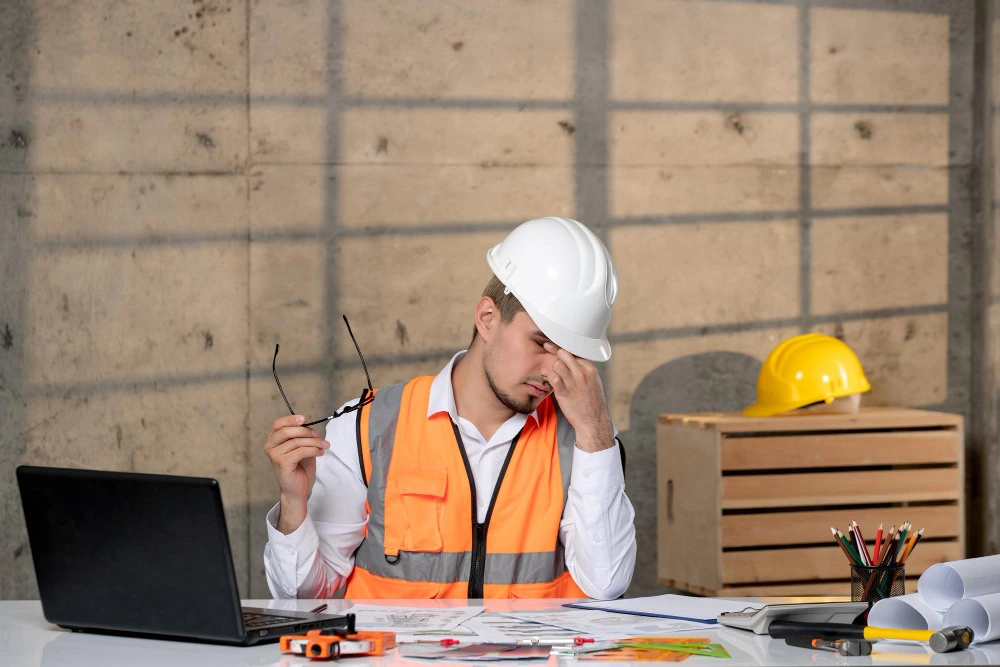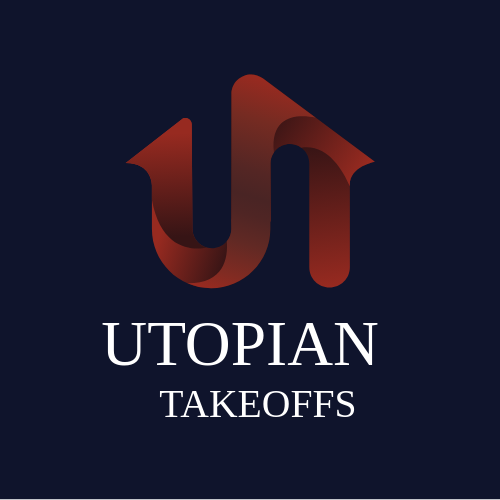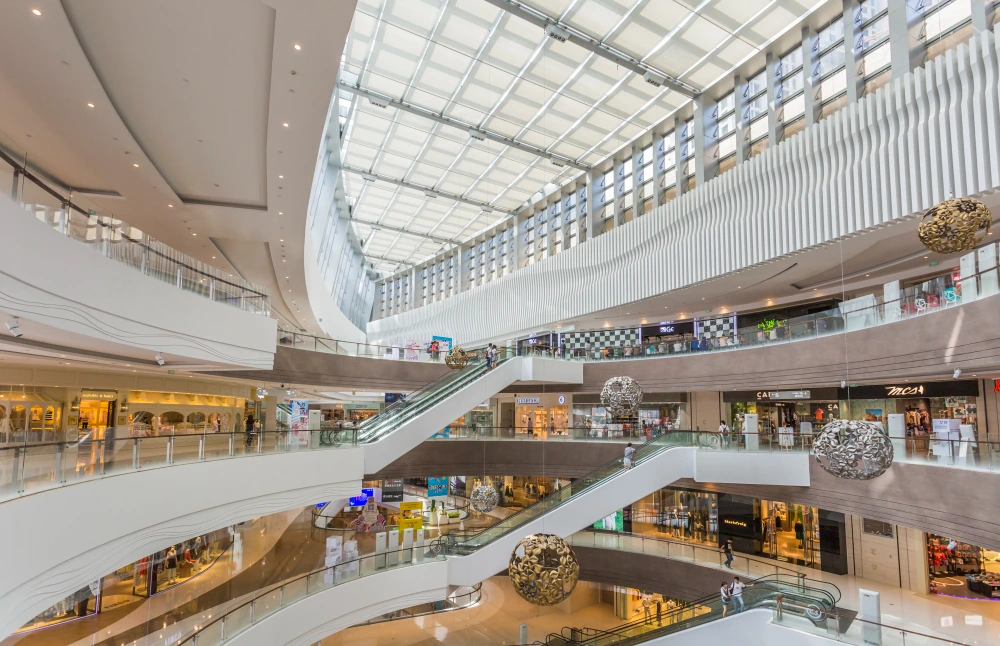Retail Fit-Out?
Converting a blank commercial space into a fully functional retail store is no small task. That’s where a retail fit-out comes in. As an experienced construction estimator, I’ve seen first-hand how a properly planned and executed retail fit-out can transform an empty shell into a thriving customer-ready environment—efficiently, within budget, and aligned with brand identity.
UtopianTakeoffs’s Retail Fit-Out Experts Services
Retail fit-outs involve interior construction work that includes everything from partition walls, flooring, ceilings, electricals, HVAC, to storefront displays and lighting. Whether you’re building a new boutique, café, or franchise outlet, a well-estimated retail fit-out ensures accuracy in materials takeoff, project budgeting, and trade coordination—helping you avoid costly overruns.
Brief Overview of Contents
Retail fit-out Purpose
A retail fit-out is the process of taking a commercial shell space and customizing it to suit the functional and aesthetic needs of a retail business. The goal is to create a customer-focused layout that enhances foot traffic, sales flow, and branding—all while staying compliant with local building codes and fire safety regulations.
Purpose of a Retail Fit-Out
- Convert raw spaces into ready-to-use retail environments
- Align the space with brand aesthetics and customer experience
- Integrate lighting, fixtures, displays, and signage effectively
- Optimize space utilization for merchandise and customer flow
- Meet regulatory standards and landlord specifications
Real-world Insight
In a recent project for a nationwide apparel chain, we reduced project delays by 15% through early-stage takeoff estimation and proactive coordination with subcontractors. Having detailed cost breakdowns for finishes, MEP systems, and custom fixtures gave the client full transparency and control over their budget.
Shell and Core vs. Category A and B Fit-Outs
Understanding the levels of fit-out is essential when estimating scope and cost. Each category has its own set of construction elements, and misclassification often leads to miscommunication and budget discrepancies.
| Fit-Out Type | Includes | Best For |
| Shell and Core | Basic building structure – walls, floors, HVAC infrastructure | Developers/landlords |
| Category A (Cat A) | Suspended ceilings, lighting, HVAC, basic flooring | Office landlords or leasable units |
| Category B (Cat B) | Interior design, partitions, branded finishes, furniture | Tenants and retail business owners |
In retail construction, most clients seek Category B fit-outs—these are the detailed finish packages that bring the space to life. From a cost-estimator’s viewpoint, this is where accurate quantity takeoffs and line-item budgets become critical. Every linear foot of millwork or lighting drop needs to be accounted for to avoid scope creep.
Pro Tip
Always clarify with clients whether the space is delivered as Shell and Core or Cat A. This determines whether your retail fit-out budget should include base building upgrades or just interior design enhancements.
By partnering with a specialized retail fit-out takeoff service, you gain more than just numbers—you get clarity, control, and confidence in your project’s financial planning. Whether it’s a flagship store or a pop-up outlet, precise estimating helps avoid scope disputes and ensures timely handovers.
Let us help you plan, budget, and transform your space with the accuracy and speed today’s retail construction demands.
Why Accurate Estimating Matters in Retaexceil Projects?
As a seasoned construction estimator, I’ve seen how critical accurate estimating is in retail projects—from single-store fit-outs to national rollouts. In the world of retail construction, even small miscalculations in materials, labor, or scope can lead to budget blowouts, supply delays, or missed openings, all of which cost more than just money—they damage your brand reputation.
An experienced retail fit-out estimator ensures your project is grounded in realistic numbers, tight schedules, and clear trade scopes. Whether you’re planning a boutique, food outlet, or franchise store, precise estimating helps you plan smartly, procure efficiently, and complete projects on time—all while keeping stakeholders confident.
Budget Control & Cost Overruns
Retail construction budgets are often razor-thin. Without proper estimating, small line-item gaps can lead to significant cost overruns. That’s why accurate takeoff services are essential—they allow you to compare actual quantities with contractor quotes and identify pricing red flags before contracts are signed.
How estimating helps?
- Avoids underbudgeting key elements like shopfronts, signage, MEP systems, and custom displays
- Allows clear separation of base build vs. fit-out costs
- Prevents scope creep with detailed quantity breakdowns
Real-World Insight
A retail client once approached us after overshooting their budget by 20% due to poor initial scoping. We re-estimated the remaining phases using itemized takeoffs and real-market rates—saving them over $60,000 by correcting fixture and finish discrepancies.
Efficient Material Procurement
Accurate estimates directly impact material procurement timelines and vendor coordination. Without knowing quantities, lead times, and specifications, you risk supply delays, overordering, or costly change orders.
Why it matters?
- Avoids last-minute material shortages during build-out
- Enables bulk ordering and early procurement of long-lead items
- Reduces wastage and unnecessary storage costs
By outsourcing your retail fit-out estimating, you gain detailed material schedules that align perfectly with site timelines and subcontractor needs—improving workflow and reducing logistical friction.
Timely Project Completion
In retail, time is money. Delayed openings can lead to lost sales, lease penalties, and missed seasonal opportunities. A clear, accurate estimate sets the foundation for realistic timelines, enabling better coordination between trades and faster project execution.
Estimation contributes to
- Well-sequenced construction planning.
- Predictable trade scheduling and progress tracking
- Early risk identification for scope and design conflicts
Pro Tip
Always integrate your estimate with a construction schedule and procurement tracker. This improves trade readiness and keeps your project moving on time—especially when coordinating multiple retail locations.
Key Takeaways
- Accurate retail estimating = fewer surprises, better ROI
- Supports budget control, reduces material waste, and ensures on-time delivery
- Crucial for general contractors, PMs, and developers working with retail clients
- Ideal for those looking to outsource takeoff services to ensure cost and scope accuracy
Want expert support on your next retail fit-out? Let our professional estimators help you plan, budget, and deliver with precision. Whether you’re managing one store or scaling nationwide, we bring confidence and clarity to every square foot.
Key Factors That Affect Retail Fit-Out Costs
Retail fit-outs are never one-size-fits-all. As a professional estimator with years of hands-on experience in retail construction estimating and material takeoffs, I can tell you that understanding the cost drivers early on is essential to planning and budgeting accurately. From the type of business to the building systems required, each element plays a critical role in your overall project cost.
Whether you’re pricing a single unit or rolling out a multi-store franchise, these key factors will shape your retail fit-out budget—and having accurate takeoffs for each is the difference between cost clarity and costly surprises.
Type of Retail Business (Clothing, F&B, Beauty)
Different retail sectors come with very different requirements. A clothing boutique may focus more on lighting and custom millwork, while a food and beverage outlet (F&B) needs specialized plumbing, ventilation, and kitchen equipment. Similarly, a beauty salon or spa requires high-end finishes, plumbing for sinks, and custom partitions.
Typical cost differences
- F&B Fit-Outs often cost more due to grease traps, hoods, and refrigeration
- Clothing stores focus on lighting, shelving, and dressing room construction
- Beauty salons need extensive MEP coordination and detailed finishes
Insight
We estimated a fast-casual restaurant in a shopping center where MEP (mechanical, electrical, plumbing) alone accounted for nearly 40% of the total budget—highlighting the need for accurate early-stage scoping.
Square Footage and Layout
It’s simple the larger the space, the higher the cost—but not always linearly. The layout and complexity also impact pricing. Open-plan spaces cost less per square foot than stores that need multiple rooms, structural changes, or extensive +partitions.
What affects pricing?
- Larger footprint = more finishes, materials, and labor
- Complex layouts = additional framing, drywall, and MEP rerouting
- Corner or irregular units = more custom design and fittings
Pro Tip Always estimate based on usable area, not just gross floor space, and align layout plans with your cost breakdowns.
Location (City vs. Suburban)
Location plays a big role in both labor rates and material logistics. Urban retail fit-outs, especially in major cities, tend to cost significantly more than suburban projects due to:
- Higher contractor wages
- Site access challenges (e.g., delivery restrictions, no laydown space)
- Permit and inspection costs
Cost impact by location
- City centers = 15–30% higher costs
- Suburban locations = lower overhed and faster permitting
Estimator’s Note
In a recent project in downtown Chicago, we added $25,000 in cost buffers just to accommodate union labor, after-hours deliveries, and parking.

Design Complexity and Branding Needs
The more intricate the branding and design, the higher your budget. Custom features like LED displays, high-end tilework, bespoke joinery, or immersive lighting add significantly to material and labor costs. This is where detailed takeoffs and scope-specific estimating become critical.
Design-driven costs include
- Custom signage and wall treatments
- Unique lighting fixtures or decorative ceilings
- Branded furniture and built-in displays
Example
A luxury skincare brand needed marble-tiled counters, curved walls, and accent lighting across all locations. Our team broke down every item and finished in our takeoff report to give their PMs a transparent cost plan across 5 locations.
Building Services – HVAC, Electrical, Plumbing
MEP services—mechanical, electrical, and plumbing—are often underestimated but are among the most expensive line items in retail fit-outs. This includes air conditioning, power supply for displays, emergency lighting, plumbing for restrooms, and data cabling for POS systems.
Important MEP factors
- HVAC capacity based on occupancy and kitchen load
- Electrical load planning (lighting, signage, equipment)
- Plumbing design for F&B or beauty uses
Why outsource estimating?
As you know MEP systems are highly technical. Outsourcing estimating to professionals ensures accurate unit pricing, labor breakdowns, and code compliance allowances, reducing the risk of RFIs and change orders.
Summary – Plan Smart, Estimate Right
| Factor | Impact on Cost |
| Type of Business | Influences design, MEP, and fixtures |
| Square Footage & Layout | Affects material quantities and labor hours |
| Location | Drives labor, logistics, and permitting costs |
| Design Complexity | Raises material, labor, and coordination needs |
| Building Services (MEP) | Often 30–50% of total fit-out budget |
By recognizing these cost drivers early and integrating them into a detailed retail fit-out estimate, you’ll gain full budget visibility, avoid delays, and keep stakeholders informed. Need help creating an accurate, scope-specific retail estimate? Our expert takeoff services ensure every square foot—and dollar—is accounted for.
Get Accurate Estimates. Win More Projects.
When time, budget, and accuracy matter—don’t guess. Estimate smarter. Utopian Takeoffs helps contractors, developers, and remodelers like you take control of project costs with professional
Best construction estimating and digital takeoff services in USA.
From retail fit-outs to garage conversions, we deliver fast, reliable BOQs and cost breakdowns tailored to your scope. No guesswork. No delays. Just data you can build on.
- Material & Labor Takeoff
- Retail Fit-Out & Garage Conversion Estimates
- Scope Reviews & Value Engineering
- Partner with Utopian Takeoffs to stay competitive, avoid costly errors, and bid with confidence—every time.
Typical Cost Breakdown of a Retail Fit-Out
Understanding the cost structure of a retail fit-out is essential for setting a realistic budget, securing stakeholder approval, and avoiding cost overruns. As a seasoned construction estimator, I’ve worked with general contractors and project managers across dozens of retail projects—from fashion stores to food chains—and one thing is clear: accuracy starts with a detailed cost breakdown.
Below is a reliable, itemized guide based on years of experience and industry-standard takeoff data. Whether you’re managing one storefront or an entire retail rollout, this breakdown helps identify where your money goes—and why accurate estimating services are crucial to your bottom line.
Design and Planning
Before any construction begins, there’s the design and planning phase—arguably the most strategic part of your project. This includes:
- Concept development and space planning
- Architectural drawings and 3D renderings
- Engineering reviews and permit acquisition
Cost Range 5–10% of total project budget
Pro Insight
We once saved a retail client over $18,000 in potential rework costs simply by catching structural clashes during the early design review stage—thanks to collaborative estimating and design coordination.
Demolition and Site Prep
Existing spaces rarely come ready for retail use. Demolition and site preparation are essential to clear out unwanted elements and prep the shell for new construction. This phase covers:
- Removal of partitions, flooring, ceilings
- Disposal and hauling of debris
- Structural preparation and leveling
Cost Range: 5–8% of total budget
Estimator Tip Accurately estimate labor hours and waste disposal fees, especially in city locations where access and tipping costs are higher.
Interior Construction and Carpentry
This is the structural backbone of your retail fit-out. It includes:
- Framing, drywall, and partitions
- Ceiling systems and bulkheads
- Custom carpentry for counters, shelves, and storage
Cost Range: 15–25% of total project budget
Real-World Example
For a national beauty chain, we produced detailed takeoffs for all millwork and partitions. The result? Their GC was able to lock down pricing early and avoid material shortages mid-project.
Fixtures, Fittings, and Equipment (FFE)
FFE brings the space to life and aligns with your brand’s visual identity. It includes:
- Retail display units and gondolas
- Furniture, mirrors, and POS counters
- Kitchen equipment or service stations for F&B outlets
Cost Range: 20–30% of the budget depending on the business type
Key Insight Custom FFE drives costs up quickly. Use accurate quantity takeoffs and vendor coordination early to control costs.
Mechanical, Electrical, and Plumbing (MEP)
Often underestimated, MEP systems are essential to function and compliance:
- HVAC units and ductwork
- Electrical panels, lighting, fire alarms
- Plumbing for restrooms, kitchens, and salons
Cost Range: 25–35% of the total project cost
Cost Alert
In one retail restaurant project, incorrect MEP assumptions led to a $40,000 overrun. A revised takeoff and scope analysis helped rebalance the budget and reduce waste.
Finishes and Signage
The final touches matter just as much as the structure. Finishes and signage define your brand appeal and customer experience:
- Flooring (tile, vinyl, hardwood)
- Painting, wall coverings, decorative panels
- Interior and exterior signage installation
Cost Range: 10–15% of total project budget
Pro Tip Don’t forget code-compliant signage, ADA considerations, and lighting effects—these details add up and should be reflected in your estimate.
Sample Retail Fit-Out Cost Allocation (% of Total Budget)
| Category | Typical Budget Allocation |
| Design & Planning | 5–10% |
| Demolition & Site Prep | 5–8% |
| Interior Construction & Carpentry | 15–25% |
| Fixtures, Fittings & Equipment | 20–30% |
| Mechanical, Electrical, Plumbing | 25–35% |
| Finishes & Signage | 10–15% |
Why Estimating Accuracy Matters?
These estimation accuracy matter because of following points
- Avoids budget overruns from poorly scoped trade work
- Enhances vendor coordination and material procurement
- Supports timely project delivery and smoother inspections
- Allows clients and contractors to communicate clearly on deliverables
Looking to outsource your retail fit-out takeoffs or need a line-item cost analysis? Our expert estimating team helps GCs, PMs, and owners gain cost clarity and scope control before breaking ground.
Let’s build it right—from the first number.
How a Retail Fit-Out Estimator Helps?
A retail fit-out estimator isn’t just a number cruncher—they’re your front-line ally in transforming a blank commercial space into a fully functional, brand-aligned store. With fit-out projects getting tighter on timelines and margins, hiring a professional estimator ensures accuracy, budget control, and CPM schedule confidence.
From detailed quantity takeoffs to cost-tracking dashboards, retail estimators bring clarity to every phase of your project. Whether you’re managing a franchise rollout or a one-off boutique, professional estimating services reduce financial risk, improve trade coordination, and deliver project predictability.
Accurate Takeoffs and BOQs
One of the most critical roles of a retail fit-out estimator is to produce accurate takeoffs and Bills of Quantities (BOQs). These documents outline exactly how much material and labor are needed—down to the last light fixture or floor tile. Without them, you’re surely relying on guesswork that may be dangerous.
Benefits of accurate takeoffs and BOQs
- Prevents underordering or overstocking materials
- Provides a clear scope of work for bidding contractors
- Reduces change orders and disputes on-site
- Enables cost benchmarking across locations
Estimator Insight
In a recent rollout for a health and wellness chain, our detailed takeoff package helped the GC avoid $50,000 in unexpected millwork and electrical changes across five stores. Every outlet had a standardized BOQ, keeping costs and quality in check.
Vendor Coordination and Cost Tracking
Retail projects often involve multiple vendors—flooring suppliers, HVAC installers, signage fabricators, and more. An experienced estimator serves as the bridge between your budget and procurement process, tracking pricing, lead times, and deliveries.
How estimators support vendor coordination?
- Align materials list with vendor catalogs
- Compare supplier quotes with original BOQs
- Flag cost escalations and material substitutions
- Assist procurement teams with order sequencing
Pro Tip: Use your estimator’s BOQ to create vendor bid packages. This keeps pricing apples-to-apples and makes bid comparisons fast and accurate.
Realistic Scheduling and Phasing
Retail fit-outs operate under strict timelines—often tied to lease agreements, grand openings, or seasonal product launches. A retail estimator helps create a phased cost plan that aligns with realistic construction timelines, so you can allocate resources efficiently.
Estimator’s role in scheduling
- Breaks down cost by construction phases
- Forecasts when materials and labor are needed
- Helps avoid bottlenecks and overlapping trade work
- Works with PMs to optimize workflow sequencing
Real-World Example
For a flagship apparel store, our estimating team created a phased plan that tracked cost by week. This allowed the PM to phase deliveries, avoid storage costs, and fast-track inspections—opening the store 10 days ahead of schedule.
Summary Why You Need a Retail Fit-Out Estimator
| Estimator Role | Project Benefit |
| Quantity Takeoffs & BOQs | Increases pricing accuracy and bid clarity |
| Vendor Coordination | Reduces procurement errors and delays |
| Scheduling & Phasing | Supports faster execution and resource planning |
Cost-Saving Tips for Your Retail Fit-Out
Retail fit-outs can quickly eat up your construction budget if not planned strategically. As a construction estimator with over a decade of experience, I’ve seen countless projects exceed their original budgets simply due to oversights, inefficient procurement, or lack of prioritization. The good news? With smart decisions and expert estimating, you can control costs without compromising quality or branding.
Prioritize Needs vs. Wants
Before you dive into construction, clearly define what’s essential versus what’s aesthetic. Your budget should first focus on functional requirements like HVAC, lighting, and layout compliance before allocating funds to luxury materials or custom finishes.
Cost-control benefits
- Keeps core infrastructure on track
- Prevents scope creep from designer “extras”
- Creates a roadmap for future upgrades if needed
Use Pre-Fabricated Components
Incorporating pre-fabricated or modular elements—like shelving, walls, counters, or ceiling panels—can dramatically reduce both labor costs and installation time.
Advantages of prefab materials
- Lower labor cost due to faster installation
- Consistent quality across multiple store locations
- Reduced on-site construction waste
Pro Tip: If your business is scaling or franchising, use prefabricated designs for consistency and efficiency. Our takeoff team can help compare labor hours between custom builds and prefab packages to find the best ROI.
Choose Local Materials
Sourcing materials locally reduces logistics costs, shipping delays, and import taxes. It also helps keep the supply chain more predictable—a big win for retail openings on a tight schedule.
Why local sourcing saves?
- Cuts down delivery time and cost
- Easier replacement if materials arrive damaged
- Often more sustainable, supporting green certifications
Example
For a boutique clothing store chain, we recommended switching to a locally available LVT flooring option—saving over $12,000 in freight charges and avoiding a three-week delay from overseas shipping.
Conclusion
A successful retail fit-out starts with accurate estimation. As an estimator, I know the importance of detailed takeoffs, realistic budgets, and coordinated timelines. From MEP systems to custom fixtures, every element needs precise costing to avoid overruns and delays. A professional estimating service ensures cost clarity, scope accuracy, and better trade coordination—making your project more efficient and profitable. Whether you’re opening one shop or scaling across locations, proper planning and estimation are your foundation for success.
FAQs
What’s the difference between Shell & Core, Category A, and Category B fit-outs?
Shell & Core: A basic building structure with no internal finishes.
Category A (Cat A): Includes ceilings, basic lighting, flooring, and HVAC—ready for leasing.
Category B (Cat B): Fully customized space with branding, partitions, fixtures, and furniture—ready for business.
Why is estimating important in a retail fit-out project?
Accurate estimating ensures budget control, helps prevent cost overruns, supports scheduling, and allows better coordination between trades. It gives stakeholders clarity on the project scope and expected costs from the outset.
How long does a typical retail fit-out take?
Retail fit-outs can take anywhere from 4 to 12 weeks depending on the project’s size, complexity, and lead times for materials. Planning and procurement stages may add several weeks before construction begins.
Can a retail fit-out be done while the store is open?
In some cases, yes—especially for minor upgrades or phased renovations. However, full fit-outs usually require the store to close temporarily for safety and efficiency reasons. Careful scheduling and phasing can minimize downtime.
- 10-Point Estimation Accuracy Checklist for Project Owners
 Steps for Accurate Construction Estimates In construction, every dollar counts — and one bad estimate can derail even the best project plan. As a project owner, your decisions hinge on how accurate those numbers are. This 10-point checklist turns complex estimating standards into clear, actionable steps that protect your budget, minimize surprises, and keep your … Read more
Steps for Accurate Construction Estimates In construction, every dollar counts — and one bad estimate can derail even the best project plan. As a project owner, your decisions hinge on how accurate those numbers are. This 10-point checklist turns complex estimating standards into clear, actionable steps that protect your budget, minimize surprises, and keep your … Read more - Why past Data and Experience Matter in Construction Estimation
 Data and Experience Matter in Construction Estimation In today’s fast-changing construction industry, accurate cost estimation can make or break a project. Modern tools like BIM (Building Information Modeling) and AI-powered estimating software have transformed how professionals work. However, the real strength of a precise estimate still comes from historical data, solid analytics, and hands-on experience. … Read more
Data and Experience Matter in Construction Estimation In today’s fast-changing construction industry, accurate cost estimation can make or break a project. Modern tools like BIM (Building Information Modeling) and AI-powered estimating software have transformed how professionals work. However, the real strength of a precise estimate still comes from historical data, solid analytics, and hands-on experience. … Read more - Real-World Application, Challenges, and What’s New for Estimators
 Challenges and What’s New for Estimators Before moving into the next phase of our discussion, we’ve already explored two key areas in previous parts— the evolving future of construction estimation and the latest tools, techniques, and when to use them. Now, in this third part, we’ll shift our focus toward real-world applications, the challenges companies … Read more
Challenges and What’s New for Estimators Before moving into the next phase of our discussion, we’ve already explored two key areas in previous parts— the evolving future of construction estimation and the latest tools, techniques, and when to use them. Now, in this third part, we’ll shift our focus toward real-world applications, the challenges companies … Read more - How New Techniques Are Changing Construction Estimation in the USA
 New Techniques Are Changing Construction Estimation Byline (Staff Reporter) — October 2025 Construction estimating in the U.S. is going through a major transformation. What used to rely heavily on spreadsheets, manual takeoffs, and rough guesswork is now being reshaped by powerful new technologies. In the last couple of years, contractors and project owners have started … Read more
New Techniques Are Changing Construction Estimation Byline (Staff Reporter) — October 2025 Construction estimating in the U.S. is going through a major transformation. What used to rely heavily on spreadsheets, manual takeoffs, and rough guesswork is now being reshaped by powerful new technologies. In the last couple of years, contractors and project owners have started … Read more - When to Use Right Construction Estimation Tools Techniques-Interview Part 2
 When to Use Right Construction Estimation Tools and Techniques InterviewerIn Part 1, we explored AI, BIM, and automation. Let’s dive deeper — what are some of the latest tools and techniques changing the estimation process today? ExpertThe latest wave of tools focuses on integration and precision. Platforms like ProEst, Trimble Estimation, and Bluebeam Revu now … Read more
When to Use Right Construction Estimation Tools and Techniques InterviewerIn Part 1, we explored AI, BIM, and automation. Let’s dive deeper — what are some of the latest tools and techniques changing the estimation process today? ExpertThe latest wave of tools focuses on integration and precision. Platforms like ProEst, Trimble Estimation, and Bluebeam Revu now … Read more - Future of Construction Estimation-Expert Insights & New Trends
 Future of Construction Estimation Estimation Expert: Hashim Khan – Senior Construction Estimation Expert with over 5 years of experience in the field. Interviewer Thanks for joining us. to start — what are the biggest shifts happening in construction estimation right now? Estimation Expert The future of construction estimation is all about data and automation. Estimators … Read more
Future of Construction Estimation Estimation Expert: Hashim Khan – Senior Construction Estimation Expert with over 5 years of experience in the field. Interviewer Thanks for joining us. to start — what are the biggest shifts happening in construction estimation right now? Estimation Expert The future of construction estimation is all about data and automation. Estimators … Read more

